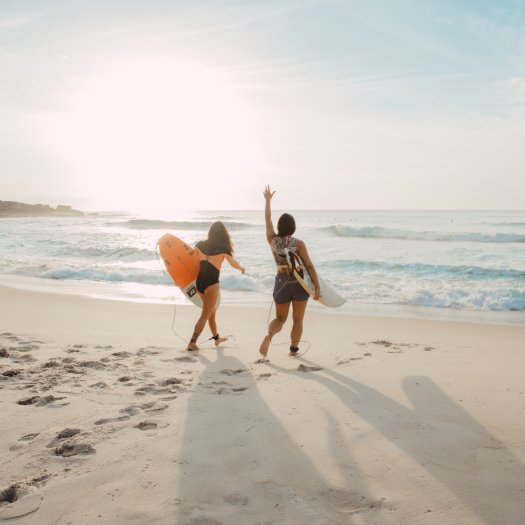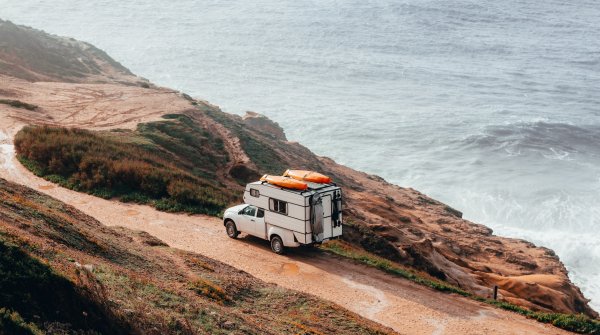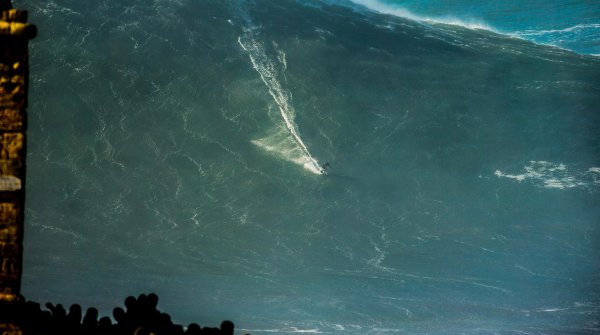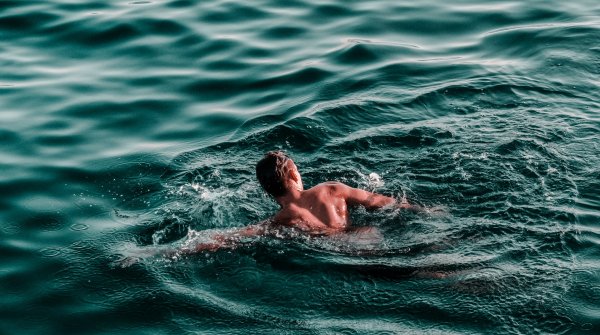But where does the elite surf? There are countless coasts around the world that offer the right conditions. Each surf spot has its own unique characteristics and can look completely different at different times, depending on the natural conditions. From Teahupoo to Shipstern Bluff, we have the five most extraordinary surf spots in the world for you.
- Nazaré, Portugal: The superlatives
- Teahupoo, Tahiti: The most dangerous wave
- Pipeline, Hawaii: The perfect wave
- Pavones, Costa Rica: The longest wave
- Shipstern Bluff, Australia: The Unsurfable Wave
Big, bigger, Nazaré. Or as the online magazine meerdavon describes it: the "Big Wave Surf Mecca of Portugal". Nowhere else in the world do the waves pile up as high as they do here in a fishing village on the Portuguese coast – up to 25 meters high when conditions are ideal. The monster waves are made possible by the spot's special natural features, namely an underwater canyon right near the coast and underground currents that further fuel the size of the waves. It is not for nothing that Nazaré is called the sandbank that makes widows – because the spot is really not for beginners. At this unique place, however, quite a few world records have been set and broken.
One of the most famous, if not the most famous surf spot in the world. The wave of Teahupoo off the coast of Tahiti is at least as challenging to surf as that of Nazaré and can be extremely dangerous. The special feature: the wave breaks extremely powerful and hollow (barrel), at the same time the underlying coral reef reaches up to 50 centimeters below the water surface. It is precisely this reef that provides the special shape of the wave at the "Place of Skulls" – and for numerous accidents, because in Teahupoo it is better not to risk a wipeout. But when surfers ride through the ice-blue channel in bright sunshine, there is probably no other spot that guarantees such spectacular photos. The wave of Teahupoo is just "as beautiful as it is dangerous," according to National Geographic.
Banzai Pipeline, Pipeline or simply "Pipe" on the north coast of Oahu of Hawaii is probably the mother of all waves. Because it is the perfect wave and no surf magazine can do without a photo of it. And yet "this wave has retained its magic", according to surfersmag. It breaks extremely close to the beach, so you can see the surfers right in front of you. At the same time, it gets up to six meters high and similar to Teahupoo, the surfers ride through a barrel – hence the name Pipeline. Three reefs, sharp and cavernous, make for the perfect wave and at the same time life-threatening injuries if you don't time it perfectly. Pipeline can look very different depending on the conditions. But the spot in Hawaii will always remain one of the most legendary in the world.
If you want to surf at Pavones in the Gulf Dulce in Costa Rica, you really have to want it. The spot flies globally still very much under the radar of most surferm and is touristy little developed. And therefore only accessible via a gravel road through the jungle. In addition, it needs a really big swell to have dream conditions for surfing – and that only happens a few months a year. But when everything fits, Pavones really becomes a paradise: Here is one of the longest left-breaking waves in the world. If you're lucky, you'll stand on the board for over two minutes and cover almost a kilometer. And you might have to share the wave with slightly fewer surfers than at the other spots mentioned. All in all, this wave is "absolutely legendary," as Gathering Waves describes it.
For a long time, there was no consensus at Shipstern Bluff in Tasmania, Australia, as to whether you could surf this wave, because "Shippie" is one of the "wildest and most dangerous" waves in the world, this is also confirmed by surfertoday. You can, but it takes extraordinary skills to do so. That's because Shipstern Bluff doesn't come across as a perfect wave, but a formation – with ripples in the wave that almost look like steps and can appear out of nowhere. In addition, the wave is about ten meters high and very powerful. The special feature: it does not break on the (sandy) beach, but several kilometers from the coast. And this consists of very sharp, angular rocks. The wave is made even more uncomfortable by the fact that the water is freezing cold and the spot can only be reached by boat/jetski or a long hike through the jungle. In short: For Shipstern Bluff you really have to dress warmly.
- ISPO awards
- Mountain sports
- Bike
- Design
- Retail
- Fitness
- Health
- ISPO Job Market
- ISPO Munich
- ISPO Shanghai
- Running
- Brands
- Sustainability
- Olympia
- OutDoor
- Promotion
- Sports Business
- ISPO Textrends
- Triathlon
- Water sports
- Winter sports
- eSports
- SportsTech
- OutDoor by ISPO
- Heroes
- Transformation
- Sport Fashion
- Urban Culture
- Challenges of a CEO
- Trade fairs
- Sports
- Find the Balance
- Product reviews
- Newsletter Exclusive Area
- Magazine






